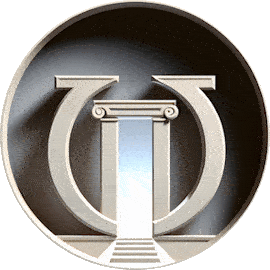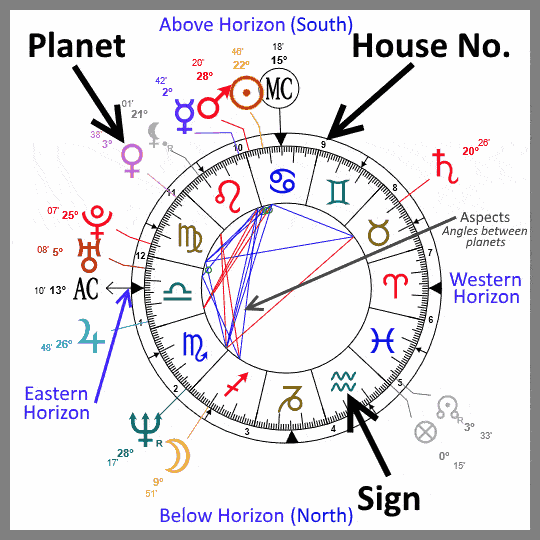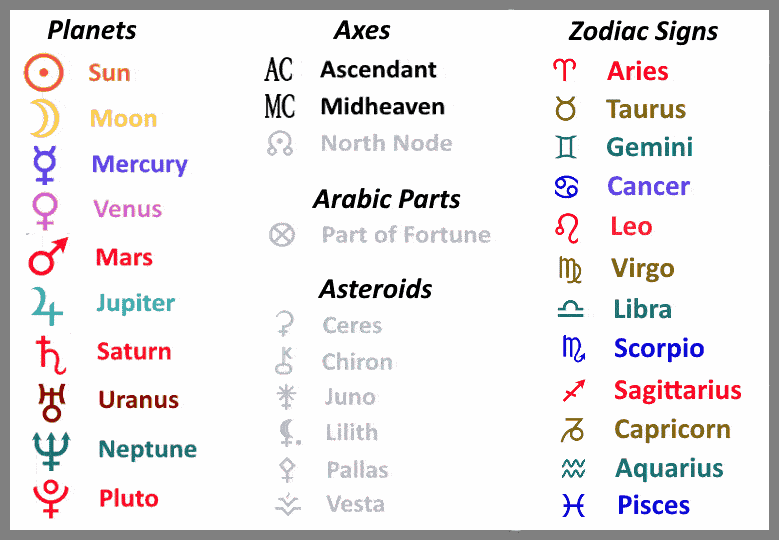Your Birth Chart and Daily Forecast
About Astrological Birth Charts
An astrological birth chart, or 'natal chart', is a graphical representation of the zodiac as it appears in the sky at the exact moment and location of a person's birth.
Due to the earth's rotation, the stars (and zodiac signs), like the Sun, constantly move across the sky, rising in the east and setting in the west, taking 24 hours to complete a full cycle. Astrologers believe that the zodiac sign rising on the eastern horizon at the moment of birth (known as the 'Ascendant') is especially important, and indicates the person's dominant way of presenting themselves to the world. The zodiac positions of the planets (which, in astrology, include the Sun and Moon) are also significant, with each indicating a particular aspect of a person's character. For example, one's 'Sun Sign' (aka 'Star Sign') represents the core self, one's 'Moon Sign' reflects emotions and instinctual tendencies, and one's 'Venus Sign' indicates the way that love and pleasure are expressed.
In addition to the twelve zodiac signs, the area of sky through which the zodiac revolves (including that currently below the horizon) is similarly divided by astrologers into twelve regions (known as 'houses'). Each house is believed to represent a particular area of a person's life and activity, such as family, health, or work. Astrologers have devised various ways of calculating house sizes and boundaries. In all systems, however, the first house is located on or below the eastern horizon, proceeding in sequence (down-under-up-over) so that the twelfth house is the region immediately above the first house. On a natal chart, the twelve houses begin at the left (eastern) horizon and proceed anticlockwise around the circle.
Interpretation of a birth chart takes into account both the zodiac sign and the house in which the planets and other astrological features are located. For example: Sun in Scorpio in the 3rd house; Venus in Aquarius in the 10th house. The angular distances between planets (known as 'aspects') are also important. For example, if two planets are within a few zodiacal degrees of each other (known as a 'conjunction') their energies are believed to combine powerfully. Other angular separations have their own significance. For example, when close to 120 degrees ('trine') the aspect is said to be fortunate, whereas close to 90 degrees ('square') it is unfortunate.
Because the positions of the zodiac and planets are constantly shifting, it is important that the time and location of birth are known as accurately as possible. This is especially important when considering the houses and Ascendant. If the time of birth is unknown, it is not possible to calculate these. However, provided you know the date of birth, the zodiac assignments should all be correct, with the possible exception of the Moon (since it only takes around two days to move completely through a sign).
With all these factors to consider, detailed interpretation of a natal chart is complex, requiring an understanding of any computational limitations and an ability to synthesize the meanings of the various astrological indicators with subtlety and intelligence.
Although the scientific legitimacy of astrology is widely dismissed, its power to stimulate the imagination and promote self examination remains formidable. Birth charts, in particular, have experienced a resurgence in popularity in recent years, especially among the young. Whether considered as a pseudo science, an alternative belief system, or a psychological tool, the astrological birth chart continues to invite questions about identity, destiny, and the universe's influence on human existence.
About the Astrologer App
This interactive Astrologer app will instantly cast and interpret the birth chart (natal horoscope) for any person born after 1900. You can also compute charts for significant events such as weddings, meetings, product launches, or travel.
You will need to know the date and place and, for maximum accuracy, the exact local (clock) time of the birth or other event. If you do not know the exact time, you can select a range.
The app will automatically correct for daylight saving time if needed. You do not need to make this correction yourself.
Simply enter your birth details, and choose "Astrology Report" for your FREE birth chart, or "Daily Forecast" for your FREE personalized daily horoscope. If you do not wish to enter your real name, you can use initials or an alias.
Astrologer


Enter your data
Services marked $ require payment
All others are FREE
The Astrologer's services are provided by astro-app.net
Psychic Science is not responsible for these services
Your Birth Chart or Forecast, will be shown instantly, together with interpretation of the various astrological elements.
By clicking the Database button, you can store your details in your browser and retrieve them later.
You do not need to sign up to use the free services offered by the Astrologer. However, if you open an Astrologer account, your information will also be stored in the Astrologer's web server. This way, you will be able to retrieve your data on any computer or mobile app.
Understanding the Birth Chart
Your birth chart allows a detailed astrological analysis of your temperament and character.
Astrological interpretation is a complex process, based on examining the exact positions of important astrological elements.
These include:
- The planets - astrologically, these include the Sun and Moon.
- The Ascendant (AC) - the zodiac degree that is rising on the horizon.
- The Midheaven (MC) - the highest point of the Sun's path.
- The Moon's Nodes (North and South) - the two points of intersection between the apparent paths of the Sun and Moon.
- The Part of Fortune - calculated from the relative positions of the Sun, Moon, and Ascendant.
- Certain major asteroids.
Due to the rotation of the Earth, the zodiac signs occupy different areas of sky, depending on the exact time and location of the birth or other event.
Traditionally, 12 regions (or 'houses') of sky above and below the horizons are recognized, although there are different ways in which these regions are determined. Each house is believed to signify a different area of human concern.
As well as the zodiac and house position of each astrological element, it is also important to consider the angles (or 'aspects') between the various elements. Certain aspects are believed to be fortunate, while others can indicate misfortune.
Birth Chart (Example)

Key to Astrological Symbols


